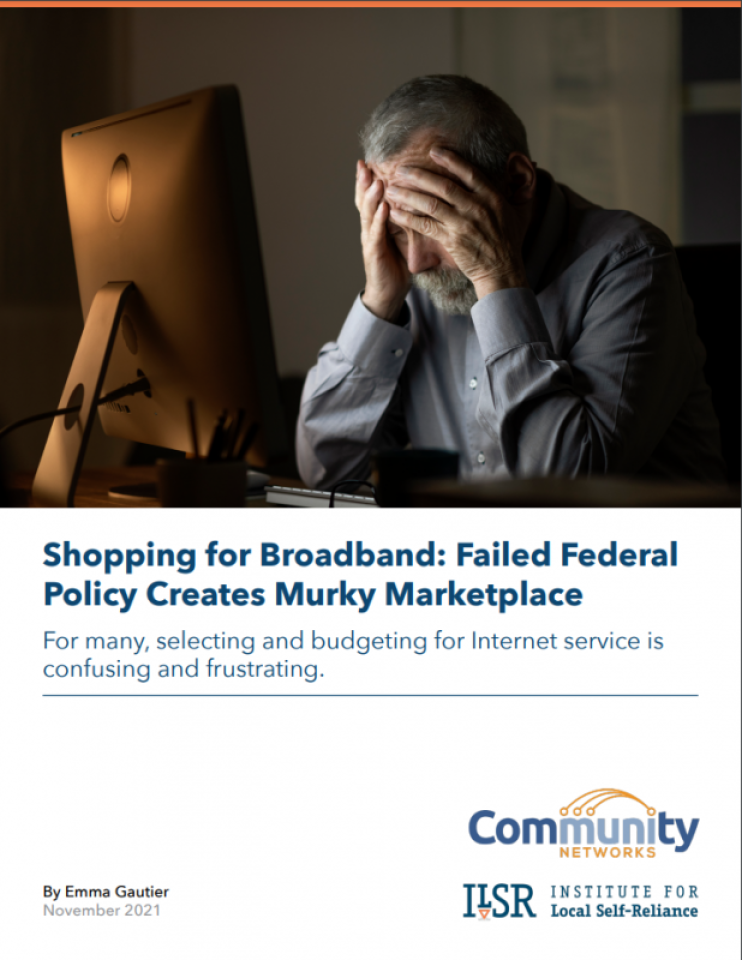
Report updated in January, 2022.
A new report from the Institute for Local Self-Reliance (ILSR) examines Internet Service Providers’ (ISPs) transparency — or lack thereof — around the Internet service packages they offer. Shopping for Broadband: Failed Federal Policy Creates Murky Marketplace [pdf] finds that locally-controlled broadband networks are the most transparent around key service details. Large ISPs, on the other hand, are more likely to make information like upload speed and pricing difficult or impossible to find.
Missing or unclear information is frustrating for anyone shopping for a new Internet service. It can make it especially difficult for low-income customers, who need to know pricing details (such as the difference between a service’s promotional price and standard monthly cost) in order to navigate the market and budget for service. Federal standards for transparency exist, but are not currently enforced in any real way by either federal regulation or market pressure.
Recently, Congress passed the Infrastructure Investment and Jobs Act, which includes new information disclosure requirements for ISPs. To underscore the value of these requirements and the need for their proper enforcement, this report offers detailed analysis of 50 of the nation’s largest private wireless, private fiber, cable, municipal, and cooperative ISPs based on how clearly they disclose basic service and pricing information. Key findings include:
- Municipal broadband networks offer the most available and accessible information in the three categories analyzed.
- Private fixed wireless providers had the most missing information, with only three out of ten offering clear information in all three categories.
- Locally-controlled networks — including municipal and cooperative networks — are held accountable by their customers to a greater degree than their larger counterparts, with more incentives to disclose information in a more comprehensive and accessible way.
- Overall, the ISPs analyzed in this report tend to offer the best information regarding download speeds and the worst information regarding upload speeds.
The report identifies multiple dimensions of the Internet transparency problem and offers a series of policy solutions to help hold providers accountable and get customers the information they need. One of these recommendations is to standardize how information is made available to customers by implementing a “consumer broadband label.” The label as a required disclosure format is written into the Infrastructure Investment and Jobs Act, but the extent to which use of the label will be enforced is still unclear.
Emma Gautier, author of the report, said, “Our findings are an affirmation of what many customers, entrepreneurs, researchers, and policymakers already know to be true – that it’s hard to find information about Internet service. Fortunately, there is a simple policy solution — the consumer broadband label recently passed by Congress. Just as customers can glance at the side of a cereal box and glean the sodium content, they should be able to look at Internet service options and immediately understand speed and pricing information. If enforced, this label has the potential to make selecting Internet service much easier.”
Read Shopping for Broadband: Failed Federal Policy Creates Murky Marketplace here [pdf].

